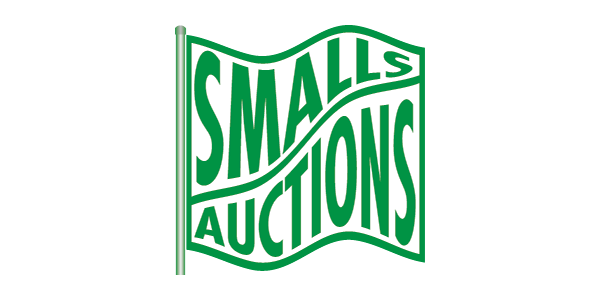Auction 73 Highlights
Welcome to Smalls Auctions Sale 73
While I was sitting here musing the fate of the World impacted by ‘Climate Change’ and now a novel virus ‘Covid-19’ which has struck from left field, I began to think of other things that are under threat in the modern age.
One thing that immediately springs to mind are paper banknotes which until very recently were the common medium of one-on-one exchange and had been for centuries. ‘Baby boomers’ will regale you of olden-day stories of sending cheques through the mail to settle accounts. The more daring was also not averse to pinning a few notes to a card to send as a quick and easy Christmas or Birthday present. Now it is Credit and Debit Cards, Eftpos, Electronic transfers, PayPal etc which has left the poor old banknote heading for the same retirement home as stamps which were done in by the Email.
Even banknotes have been gradually transitioning from paper to plastic since Australia claimed the title for the world’s first plastic note with its Bi-Centennial $10 in 1988. It may well have been the first successful circulating plastic note, but collectors will tell you that the Isle of Man issued a note in 1983 made from a type of plastic called ‘Bradvek’ and Haiti even earlier in 1979 with ‘Tyvek.’ In the case of the Isle of Man, folklore tells us ‘Bradvek’ was discontinued when bar patrons took to seeing how far they would stretch, and ‘Tyvek’ had an equally short life when rumours began to circulate in Haiti that plastic notes carried disease.
We have decided to take a stand for paper and have included in this sale only banknotes made from this traditional medium. The selection is diverse covering a strong selection of Australian notes as well as issues from most parts of the World.
The earliest note on offer is the Great Britain ‘Newland’ Pound of 1805 of which few have survived and even less fully intact. It is certainly one not to be missed.
There are also a number of rare ‘Specimen Colour Trials’ of banknotes from Ceylon, Malta, Cyprus and Egypt which were eventually discarded before the final colours were chosen for the circulation notes. These are very rare and in the case of the Ceylon 50 Rupees possibly unique. Other rare ‘Specimens’ from Australia, Canada and Fiji presenting the chosen colours are also included.
We have cheated a little by including a rare ‘vellum’ banknote of 1879 from the Cocos Keeling Islands but as it is organic, we thought what the heck.
Rare ‘Star Replacement’ notes are also well represented. These are an anachronistic oddity of the pre-digital age when everything had to be manually accounted. These notes were slipped into bundles during the guillotining process to replace a note that was damaged during printing so that the sequence could be maintained. A bank teller setting up for the day could then tell by inspecting just the serials of the first and last note in a new bundle that he had a hundred notes. These days notes are mechanically counted and weighed and tellers (if you can find one) are no longer held responsible for small shortfalls.
We are not being alarmist but perhaps now is the time to get into paper before technology seals its fate and it disappears altogether.
Happy bidding
Smalls Auctions

Great Britain. '6 Day of Aug(ust) 1805' (1803 issue) 'Newland' Pound, PCGS 20 Details
Find out more
Cyprus. £5 'Specimen (1966), about Uncirculated OPQ
Find out more
Australia. 'Coombs - Randall' * Replacement $1 (1968) PCGS 66 PPQ
Find out more

